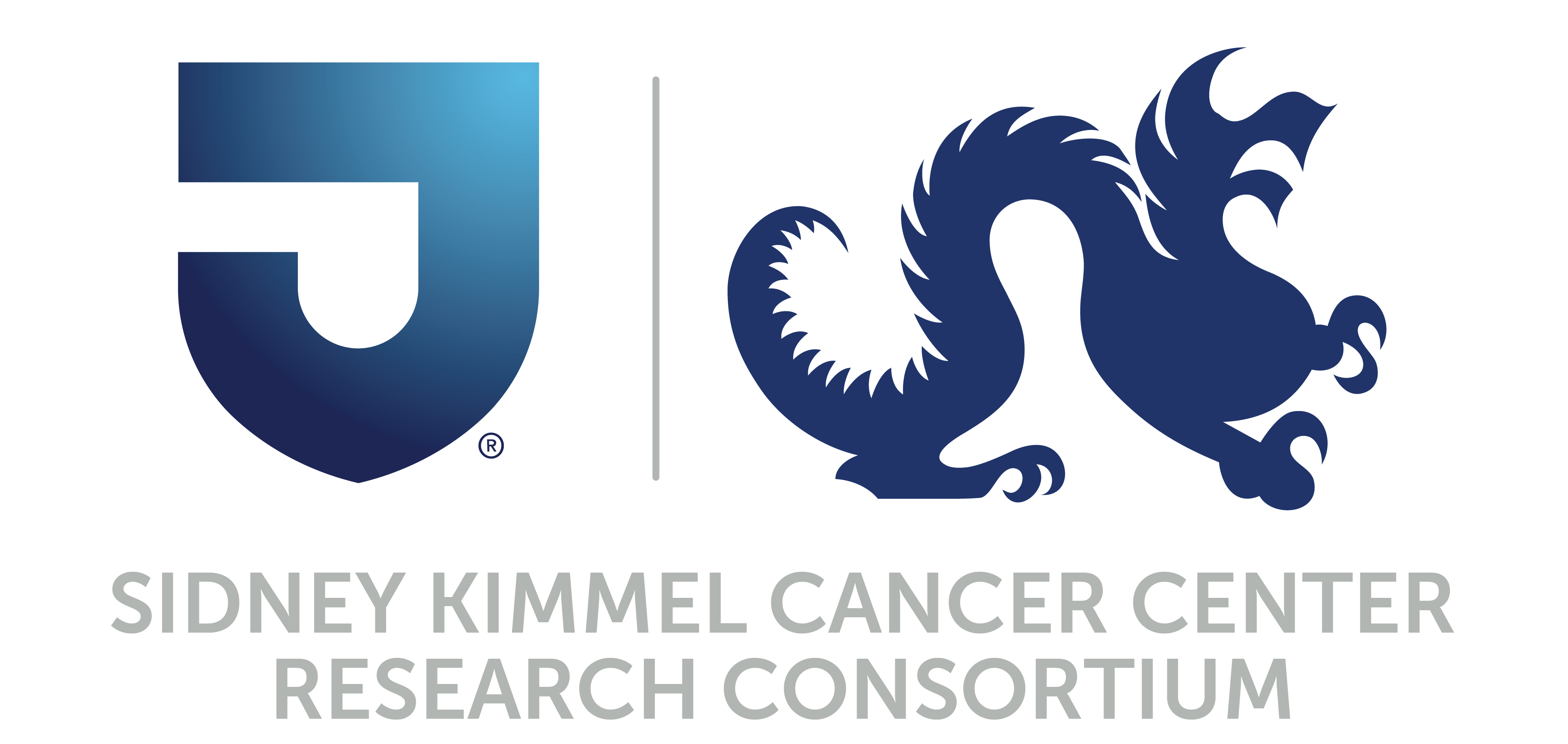- Advertise
- About OncLive
- Editorial Board
- MJH Life Sciences brands
- Contact Us
- Privacy
- Terms & Conditions
- Do Not Sell My Information
2 Clarke Drive
Suite 100
Cranbury, NJ 08512
© 2025 MJH Life Sciences™ and OncLive - Clinical Oncology News, Cancer Expert Insights. All rights reserved.
Sidney Kimmel Cancer Center at Thomas Jefferson University Announce New Finding: Opening Up Chromatin for Cell Differentiation
Two new studies from the laboratory of Dr. Alex Mazo at the Sidney Kimmel Cancer Center at Thomas Jefferson University, along with collaborators from SKCC, the Vickie and Jack Farber Institute for Neuroscience and other institutions, provide new insights into the structure of chromatin and its implications for cellular differentiation.
Two new studies from the laboratory of Dr. Alex Mazo at the Sidney Kimmel Cancer Center (SKCC) at Thomas Jefferson University, along with collaborators from SKCC, the Vickie and Jack Farber Institute for Neuroscience and other institutions, provide new insights into the structure of chromatin and its implications for cellular differentiation. The new work, appearing in the April 11th issues of Molecular Cell and Cell Reports, extend earlier findings from the Mazo lab on histone modifications of Drosophila chromatin, which led to a major shift in our understanding of how chromatin-modifying factors regulate nascent (newly formed) DNA during the process of DNA replication.
The new study in Molecular Cell is co-first authored by Dr. Svetlana Petruk of the Mazo lab and Dr. Jingli Cai from Dr. Lorraine Iacovitti’s lab (lead labs on this project) at Thomas Jefferson University, together with contributions from SKCC investigators Drs. Bruno Calabretta and Steven McMahon, along with the laboratory of Dr. Hugh Brock of the University of British Columbia. In this project, the team found that in mammalian embryonic stem cells (ESCs), including human ESCs, modification of histones that help organize DNA into the coiled chromatin structure of chromosomes plays a crucial role in facilitating cell differentiation. The process of cell differentiation depends on lineage-specific transcription factors that associate with their target genes on DNA. The regulatory regions of all genes that are repressed before the induction of differentiation contain tightly condensed chromatin, which is marked by a repressive histone modification, termed H3K27me3. This type of chromatin contains the most highly condensed structure of DNA-wrapped nucleosomes in the genome, presenting a challenge for newly induced transcription factors to overcome the barriers to entry into such condensed chromatin. The Molecular Cell study demonstrates that during DNA replication, the nascent DNA is transiently free of the repressive histone mark H3K27me3, providing a critical “window of opportunity” for the recruitment of lineage-specific transcription factors to the DNA. Author Dr. Mazo explains, “We found that shortly following induction of differentiation, the newly formed nucleosomes on nascent DNA (just after replication) are devoid of the H3K27me3 mark, so the chromatin at this stage is very de-condensed, thus allowing an easy association of any transcription factor with its target site.”
The second study, appearing in Cell Reports with Dr. Svetlana Petruk and Dr. Samanta Mariani (formerly of the Calabretta lab) as co-first authors, is also a collaborative effort involving several SKCC and Thomas Jefferson University laboratories, including those of Drs. Mazo, Calabretta (lead labs) and Iacovitti together with SKCC investigator Dr. Neal Flomenberg. In this project, the team turned its attention to multipotent hematopoietic progenitor cells (HPCs) that generate all terminally differentiated blood cells, and found that the same chromatin-decondensing mechanism is important for their recruitment of lineage-determining transcription factors. In this scenario, CD34-positive HPCs were found to shed the repressive histone mark H3K27me3 just after DNA replication, allowing recruitment of transcription factors that drive cytokine-induced erythroid or myeloid differentiation. Intriguingly, more primitive types of HPCs exhibit a very rapid association of nascent DNA with the repressive H3K27me3 histone mark, suggesting that HPCs may utilize special mechanisms of chromatin modification for recruitment of specific transcription factors during the early stages of their lineage specification. Nevertheless, the striking similarity between the transient disappearance of the same histone mark from nascent DNA of both pluripotent stem cells (ESCs) and multipotent hematopoietic progenitors (HPCs) raises the possibility, as explained by Dr. Mazo, that “this de-condensation of chromatin occurs irrespective of the induced cell lineage, and thus might constitute a previously unknown general mechanism of induction of differentiation for any cell.”
Given the importance of ESCs and HPCs in many medical and therapeutic applications, the new findings presented in these Molecular Cell and Cell Reports studies have many clinical implications. Since the chromatin de-condensing mechanism operates in HPCs, it is likely to be relevant to gene regulatory changes observed in leukemia cells, which arise when normal hematopoietic cells lose their ability to differentiate properly. More generally, many types of cancer are thought to involve cancer stem cells or other tumor-initiating cells that have lost their ability to differentiate, possibly due to abnormal functioning of this chromatin-based lineage-specification mechanism. Finally, further research on this mechanism may make it possible someday to manipulate the process, allowing the programming of ESCs or patient-derived stem cells (iPSCs) into desired cell lineages for use in many different disease therapies.
For further details, see:
(1) Svetlana Petruk, Jingli Cai, Robyn Sussman, Guizhi Sun, Sina K. Kovermann, Samanta A. Mariani, Bruno Calabretta, Steven B. McMahon, Hugh W. Brock, Lorraine Iacovitti, and Alexander Mazo. 2017. Delayed accumulation of H3K27me3 on nascent DNA Is essential for recruitment of transcription factors at early stages of stem cell differentiation. Molecular Cell, in press. http://dx.doi.org/10.1016/j.molcel.2017.03.006
(2) Svetlana Petruk, Samanta A. Mariani, Marco De Dominici, Patrizia Porazzi, Valentina Minieri, Jingli Cai, Lorraine Iacovitti, Neal Flomenberg, Bruno Calabretta, and Alexander Mazo. 2017. Structure of nascent chromatin is essential for hematopoietic lineage specification. Cell Reports, in press.
Related Content:





